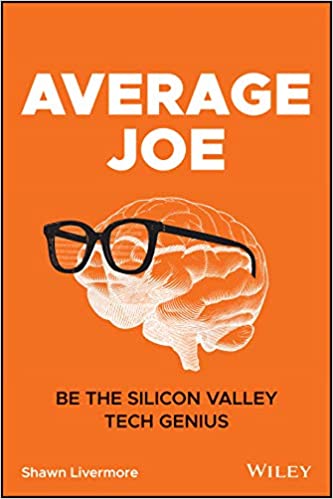Superheroes are fun to watch. It’s easier to put them into a box of something special. Most of us want to subscribe to the notion of extraordinary tech geniuses.
It’s cool to be working with some epic company and startup founder who is enjoying the limelight. Yet, the reality is that hindsight bias is always perfect. Success is evident only after the fact and before there’s lots of hype and hustling.
Average Joe tackles the heroism of the startup land. It unearths stories and research around how we learn, create and build. It provides practical tools and more importantly common sense to the hype-driven overdrive that is not actually anything new. The Great Man theory was already circulating in the mid 19th century.
Average Joe is on a mission to bust myths. It explores six different angles on the stardom and entrepreneurship and brings calming balsam for those who think they are not worthy and good enough to build their company.
The first myth is that it takes a genius to do something extraordinary. In reality, creativity is something everybody does. We may not have many eureka moments that spark amazing fully-developed ideas but neither have many of the people we consider geniuses.
Little moments of creativity are tiny steps and sparks that we encounter in day-to-day life and upon which we build our next steps of data gathering, analysing, ideation and conceptual mapping. Little moments take effort, and more work we put in the bigger the outcome. No genius gene needed. According to Robert Weisberg creative thinking is ordinary thinking and to create is ordinary.
The book reveals the creative processes of famous people from Einstein to Mozart and Winston Churchill. What appears as pure genius work is mostly hard relentless pragmatic iteration.
There are also some in-detail stories of famous tech companies or products that have made major breakthroughs in the last decades. The scientific research is intertwined with practical examples and revelations of little know behind-the-scene details of the actual work and slow progress.
The good news is that most of the creative process is just that a process. Is not tied to the person if you know the ropes. You can learn it and become better with practice.
For example, Einstein used thought fluidity as his method of getting a lot done. He worked simultaneously with many problems and switched between them often. In 1905 when he released four of his famous papers he had been working the problems for years before. The culmination of work is one thing but the actual brute force is another part of the process.
Nagging frustration of unsolved problems makes us push through and it takes subconscious work to put the missing pieces together. Einstein played violin and piano for letting his attention to slip into a daydreaming and mindless mode where the subconscious problem solving takes over. Mindless work can be anything from cleaning your house to sorting email as long as it does not require active attention but can be auto-piloted through.
The book introduces the Slow Create Framework developed by UCLA professor Jesse Rissman and the author Shawn Livermore that can be applied to any industry and any creative process requiring problem-solving. Our brain works with slow speed. We need to ponder, do back-and-forth type of iterations and start-and-stop often. The results can come fast but the process requires that you slow down your active mode. The framework helps to make this a regular practice if you don’t have a routine already.
Patterns, details and secrets are at the centre of the process. Patterns we learn by doing and details we gather with the knowledge and action. Secrets reveal themselves from the patterns and details, and unearthing secrets is part of the cyclical process that we spin for jumping from the unsolved to the nibbles of synthesis using the mindless work that finally unlocks the problem and reveals the desired inflexion.
Average Joe talks about the same topic that The Social Dilemma raised into the general public’s awareness last month. Tech industry has become very good at manipulating people’s behaviour to their advantage. In itself, it’s nothing new and other industries have been using the same methods for decades such as marketing and advertising but the amount of data, personalisation and intimacy of our devices make the issue more pronounced.
Mobile games and apps have become addictive, and this has been inflicted on us mostly with our consent. Yet, hacking our biological vulnerabilities is something that is a big ethical question for everyone to consider.
It is no secret that many entrepreneurs are contrarians, stubborn and have the beginner’s mind that is curious and fresh for asking the innocent and basic questions. First principals thinking and questioning of everything without yielding for social pressure is something that may be required to innovate big time. These are tools that can be learned.
Edwin Land was puzzled by her daughter’s innocent question of why a picture cannot be immediately seen after taking it in the analogue era. It took Land many years, and numerous processes and problems to solve before he could introduce the Polaroid camera to the public in 1947.
Average Joe is someone who has a narrow focus, solves interesting problems and is adept in an articulate speech that tells compelling stories about the work he’s doing.
If you don’t want to subscribe to the gifted winner tale you have hope but the bad news is that it may require a considerable amount of ordinary work to make a breakthrough.
Good luck average Joe!

